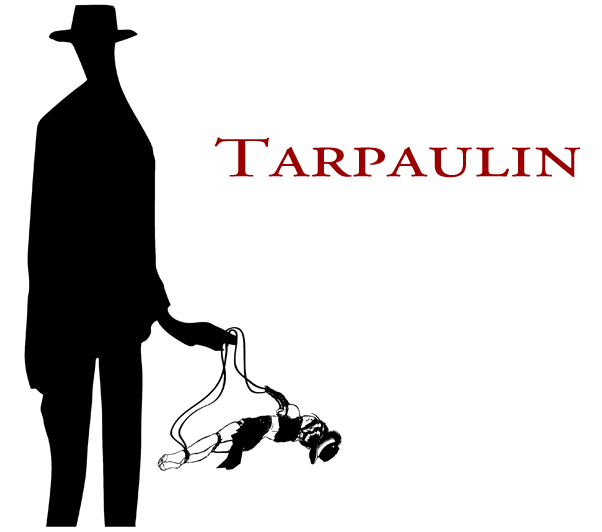 Brandi Homan
Brandi HomanBobcat Country
Shearsman Books Ltd., 2010
79 pages, $15.00
ISBN 978-1-84861-085-9
Reviewed by Min Jung Oh
When I first picked up Brandi Homan’s second collection of poetry, Bobcat Country, I could not have been less prepared for this vital text. Its cover, smeared with a rainbow of construction-paper colors, reminded me of a first-grade classroom’s spring bulletin board. Upon closer examination, I realized that the awkward animal emerging from a rainbow sprinkled with stars is actually a collage of various everyday objects and quickly understood the cover. With her deft use of vibratory repetitions within the density of collage, Brandi Homan has brought a brilliant, crucial work to us who live within a commercialized culture.
In the commercial landscape mirrored in Bobcat Country, community and identity have been replaced with the plastic gimmickry of mass-produced objects. “Everyone so weird and desperate and alone,” is prevented from authentic relations by the body-wrap of a generalized, media-fed prototype (22). For example, in the wistfully poignant “Down Home,” Homan identifies the cause of a mother’s depression in an inability to assert herself against others’ expectations determined by her socially determined role as reinforced by marketed products. This mother and all the text’s characters, stripped of their agency and community by commercial substitutions, are forced to “scream into a koala bear-shaped cookie jar, a butterfly canister” (35). Even one’s relationship with the self is mediated through the channels of commercialized masks, as in “Games We Play,” where Homan humorously describes the process of identifying oneself with characters in the TV show, Sex and the City. The individual’s “mask” is derived from objects representing commercialized fantasies, which can never be authentic for they inherently exclude the particular, instead imposing a universalizing prototype incompatible with actual identities and realities. Such a community made up of identities ungrounded in reality can only exist within artifice: “It’s past the point where I’m allowed to go without makeup” (12).
But this text is not simply a collective pointing towards problems in commercial culture that are impervious to change. Even while brutally criticizing the cultural landscape, her text is predominantly a fierce refusal to accept the supposed impossibility of authentic relation within it. Her certainty that it is in fact possible is grounded in community itself and, even more fundamentally, the language which makes community possible. Language, and only language, can catalyze lasting social transformation for it is language that creates the world and makes community possible. In “Maturity,” the poem’s persona becomes a “grown-up” when she is able to consciously give this name to herself because it is language’s always-already grounding within relation that can change identity. Conversely, it is only through community, despite its commercialized latency, that “all the women in my family” can find a language for their “oppression, repression, depression” (18). After all, “How to pull through rough weather? / Together, strapped to the hood” (18). In Bobcat Country, as with any text of social change, language and community are inextricably linked.
Homan’s genius in actualizing language’s potentiality for social transformation lies in her deconstructive process’ strict correspondence to that of the original construction, which mimics object accumulation with collage. In one of my favorites, “Drugstore Cowgirl,” she writes of this technology: “Pastiche, pastiche. Collage away. / I am not a poem-writer. I am a poem-MAKER! Cut / and paste” (50). In a reiteration of the necessitated parallel between the processes of construction and deconstruction, she writes in that same poem: “I’m out of mascara, I need to make me some masks” (50) and later, in “Recurring Dream House”: “To get everything out, I pile on stocking caps, Grandpa’s hunting vest, four-odd pairs of moonboots. Mismatched mittens” (30). These collaged lists flatten the text, sufficiently slowing the movement to maintain the conscious presence of relational absence. The interruption of repetitions, which counteract the lists’ flattening effect, coupled with her searing vivacious language with its unique emphasis on commercial details, prevent the monotony that often threatens the collaged lists of other texts. Homan’s repetitions, however, are not to be confused with a refrain, functioning instead with fragments where duration is established via parallels rather than exact repetitions of entire phrases. For example, in “Welcome to Bobcat Country,” the rhythm originates from a shifting predicate with only the repetition of “we” (15), while in “Good China” it is a shifting subject who “bought it piece by piece” (13). With this combination of collagist and durational technologies, the text awakens relations repressed by the masks of commercial accumulation from within their irreparability.
Homan’s brilliant use of collage, accumulation, and repetition are also responsible for perhaps the most impressive achievement of this text. I have long been wary of humor and irony in texts attempting to speak the unspeakable of women. Too often humor functions merely as the lemon in my fish oil: a dilution to help one swallow and prevent gagging. Humor’s increase of accessibility, by its very nature, too often demands a correspondent loss. But must it always? This text proves otherwise in its astonishing ability to utilize humor for greater readability without diminishing the work’s clarion impact. In “Are You Gonna Wake Up,” her repetition of “I’m just saying” successfully shocks the reader with the blatant substitution of authentic individualism with commercially determined images because it is inherently humorous as a colloquialism. It is possible for us to confront the cultural problematic addressed in this text without reducing it to a swallowable, inauthentic adulteration stripped of its possibilities for social change. In Bobcat Country, Brandi Homan not only asserts herself as an extraordinary voice in the genre of experimental prose poetry, but also as an inspiration for those of us who write from a desire to activate the transformative capacities of language even in this socio-cultural landscape where mass-produced objects still color our speech.




